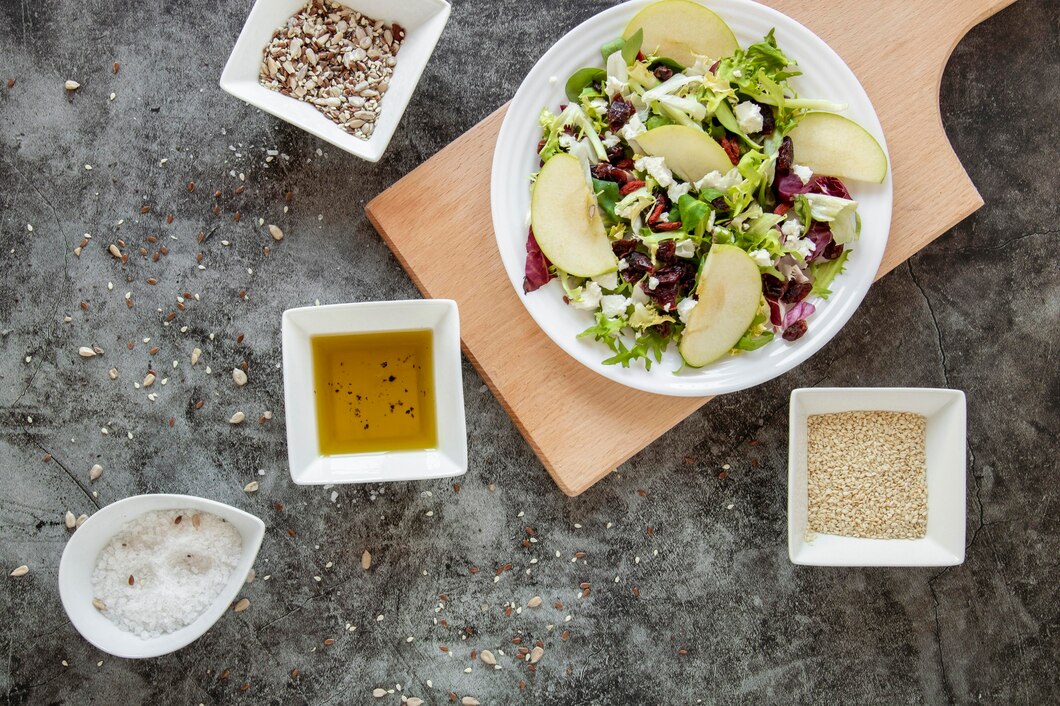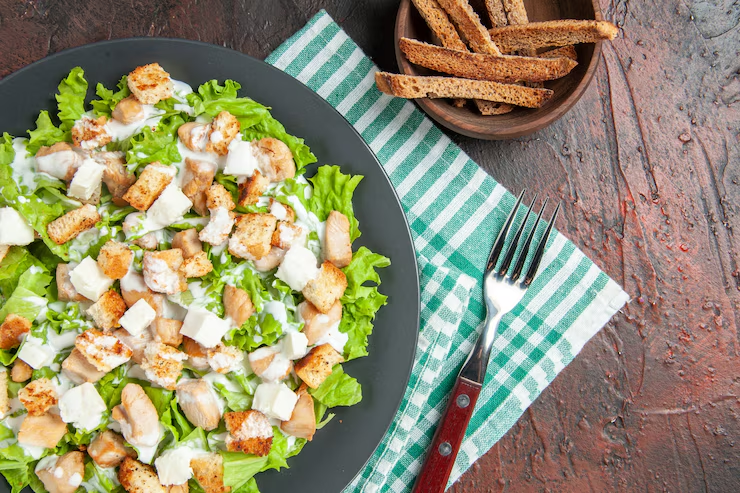Caesar Salad Dressing Nutrition: 5 Facts You Need to Know
Have you ever wondered just how healthy your favorite Caesar salad dressing really is? While it’s delicious, it’s easy to overlook the hidden calories, fats, and sodium packed into that creamy dressing. But don’t worry—making a healthy, tasty Caesar salad dressing is easier than you think. In this post, we’ll explore how to prepare a Caesar dressing with the right balance of flavors and nutrition, so you can enjoy your salad without the guilt!
This Caesar salad dressing is not just another creamy dip—it’s a nutrition-packed addition to your salad, made with real ingredients that contribute to your well-being. It’s quick to prepare, taking about 10 minutes to make from scratch, and it’s simple enough for anyone to try, regardless of cooking experience. Whether you’re looking for a healthier alternative or just want to make sure you’re using fresh ingredients, this recipe checks all the boxes.
Essential Ingredients
To make a Caesar salad dressing that’s both nutritious and delicious, here’s what you’ll need:
- Greek Yogurt: This is a healthier alternative to mayonnaise or heavy cream, providing protein and probiotics while reducing fat content. Greek yogurt also makes the dressing creamy without being overly rich.
- Garlic: Fresh garlic adds bold flavor and health benefits, including antibacterial properties and antioxidants.
- Parmesan Cheese: Use freshly grated Parmesan for its savory, umami flavor. It’s full of calcium and protein, and a little goes a long way.
- Lemon Juice: Fresh lemon juice brightens the dressing and adds a burst of vitamin C, which helps with immune function.
- Olive Oil: A small amount of olive oil provides heart-healthy fats. It’s packed with antioxidants and promotes good cholesterol.
- Dijon Mustard: This adds tanginess and depth to the dressing, plus it contains minerals like iron and magnesium.
- Worcestershire Sauce: This key ingredient gives the dressing its signature flavor. It’s rich in umami and adds complexity to the overall taste.
Substitutions & Variations:
- Vegan Alternative: Swap Greek yogurt for a dairy-free yogurt or avocado to keep the dressing creamy without dairy.
- Low-sodium Option: Use a reduced-sodium Worcestershire sauce or skip it entirely to control sodium levels.
- Add a Kick: If you like a little heat, try adding a pinch of cayenne pepper or a dash of hot sauce.
Step-by-Step Instructions:
- Prep the Ingredients:
- Mince two cloves of garlic and zest half a lemon.
- Grate about 1/4 cup of Parmesan cheese.
- Mix the Base:
- In a bowl, combine 1/2 cup of Greek yogurt, 1 tablespoon of Dijon mustard, 1 tablespoon of lemon juice, and 1 tablespoon of Worcestershire sauce.
- Add the Flavor:
- Add the minced garlic and grated Parmesan to the bowl. Stir everything together until smooth and creamy.
- Add Olive Oil:
- Slowly whisk in 2 tablespoons of olive oil to help emulsify the dressing and give it a velvety texture.
- Taste and Adjust:
- Taste the dressing and adjust the seasonings if needed. You can add a pinch of salt, pepper, or more lemon juice for an extra zing.
- Chill:
- Let the dressing sit in the fridge for about 30 minutes. This allows the flavors to meld together for a more delicious, vibrant taste.
Assembly: To assemble your Caesar salad, start by tossing your favorite greens, like romaine lettuce, with the dressing. Be generous with the dressing for a creamy, satisfying experience. Add croutons and a sprinkle of extra Parmesan cheese on top for that classic Caesar salad crunch and flavor. For a little twist, you can also add grilled chicken or roasted vegetables to turn this into a hearty meal.
Storage and Preparation Tips:
- How to Store: Store any leftover dressing in an airtight container in the fridge for up to 4-5 days. Since it’s made with fresh yogurt, it’s best consumed within this timeframe for optimal flavor and texture.
- How to Reheat: Caesar dressing is typically served cold, but if you prefer to warm it slightly, do so gently by stirring it in a saucepan over low heat. Be cautious, though—heating it too much can cause the yogurt to separate.
Recipe Variations:
- Spicy Caesar Dressing: Add a pinch of red pepper flakes or a dash of sriracha for a spicy twist.
- Avocado Caesar Dressing: For a creamier and more nutritious dressing, blend in half an avocado. It’ll give the dressing a smooth texture and add healthy fats.
- Anchovy-Free Caesar Dressing: Skip the Worcestershire sauce if you prefer a vegetarian option, or use a vegan-friendly Worcestershire sauce.
Conclusion: Making a nutritious Caesar salad dressing doesn’t have to be difficult or time-consuming. By using simple, wholesome ingredients like Greek yogurt, garlic, and olive oil, you can create a dressing that’s creamy, tangy, and better for your health. Plus, it’s versatile—whether you’re keeping it classic or trying out different variations, this dressing can be customized to suit your tastes. So why not give it a try and experiment with the ingredients? You’ll be surprised at how much better homemade dressing tastes—and how much healthier it is!
Frequently Asked Questions:
1. Can I make Caesar dressing ahead of time? Yes! In fact, allowing the dressing to sit for a few hours or overnight in the fridge helps the flavors to develop even more.
2. How can I make this dressing lighter? You can make the dressing lighter by using a low-fat Greek yogurt or reducing the amount of olive oil and cheese.
3. Can I use this dressing for other salads? Absolutely! This dressing works well on other leafy salads or as a dip for veggies. You can also use it as a sauce for grilled chicken or fish.
4. Is this Caesar dressing vegetarian-friendly? Yes! This recipe is vegetarian, but it does contain dairy and Worcestershire sauce, which may not be suitable for vegans. Check for a vegan Worcestershire sauce if needed.
5. How long will the Caesar dressing last in the fridge? This dressing will stay fresh for about 4-5 days in the refrigerator if stored properly in an airtight container.
6. Can I use store-bought dressing instead? While store-bought Caesar dressing can be convenient, it’s often packed with preservatives and extra sugar. Making your own dressing lets you control the ingredients and flavors, making it a healthier choice overall.







